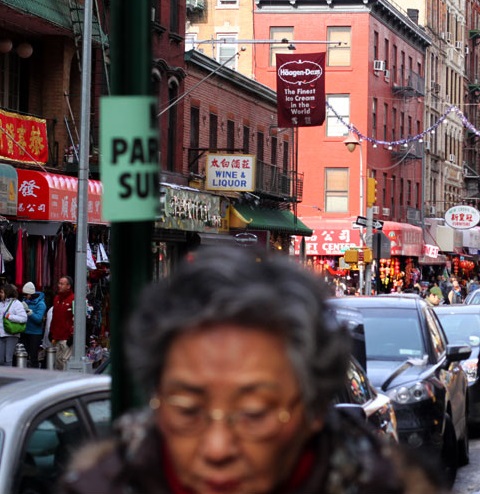Buildings Commissioner Rick Chandler warns landlords vs illegal, multiple bedspacers

Newsmakers Series with (from left) Commissioner Chandler, Errol Louis of NY1, Shant Shahrigian of Riverdale Press, and Cristina DC Pastor of The FilAm.
The Elmhurst, Queens apartment where housekeeper Wilma de Jesus lives looks like a maze for lab rats.
The living room is creatively partitioned using book shelves, wall dividers, and bamboo screens. Each space has a futon or a sleeping bag a tenant calls her bedspace. Wilma shares this apartment with a dozen other Filipino immigrants, one of them an artist, the other a recently separated woman looking for temporary shelter. This has been Wilma’s ‘home’ for the last three years.
One day, the tenants were told to take all their belongings and return at night because the apartment was due for inspection. Wilma packed all her possessions in two suitcases and lugged them to work. The place needed to look “normal,” good only for a couple in whose name the rent-stabilized apartment is registered. When they got home, they were happy to learn they passed inspection. Immediately after, they returned the dividers to claim their rightful space and called it a night.
“I pay $900 for this,” she said. “For now that’s all I can afford.” Times 12, that should give the landlords, a Filipino couple, a lot of undeclared income.
Buildings Commissioner Rick Chandler is aware that ‘illegal conversions’ of apartment units happen all across the city not just in Queens.
“Housing is a real challenge in the city,” he said at a Newsmakers Series forum organized by the Center for Community and Ethnic Media at the CUNY Graduate School of Journalism.
At the same time, he stressed the need for his agency to respond if unsafe conditions exist in a building. Twelve people in an apartment unit meant for a couple “sounds like a very dangerous situation,” he said in response to questions from a panel of journalists. The panel, led by Errol Louis of NY1, comprised Shant Shahrigian of Riverdale Press and Cristina DC Pastor of The FilAm.
“We’re not trying to evict people,” said Chandler, a licensed engineer, “but if we see a condition where someone is in an unsafe condition, you need to be out of that place.”
At the same time, he warned landlords and apartment owners that they face arrest warrants if they continue with the “hazardous” condition even after an initial warning.
Chandler’s marching orders revolves around building safety. He was commissioner for 15 years until 2002, returning in 2014 when Bill de Blasio became mayor. A lot has changed in the Department of Buildings (DOB) since, he said. To begin with, it has expanded to a personnel capacity of 1,500, and technology has become an integral part of how it upholds its integrity and culture of transparency.
The agency’s “integrity level” has been a challenge in the past, he acknowledged.
One of the most recent cases was in February when corruption charges were brought against 50 building inspectors and private contractors. Investigation showed that $450,000 in bribes were paid to “fast-track” the construction of buildings across Manhattan and Brooklyn by bypassing building codes.
Chandler hoped to make inspection an open process by hiring 320 additional examiners and inspectors, who will be equipped with the latest tracking technology.
“They had inferior phones so now they have outstanding phones,” he said. “Every step that they take, we can (tell them) we see where you are. I can see on a screen a trail of everywhere you went. I can see where you are looking for parking space. Then we can match it up to your route for the day. This isn’t to play ‘gotcha.’ Just to tell our inspectors that this is our culture, embrace it.”
He said all new hires will go through “vigorous” background checks, in the same way that existing personnel will continue to be checked frequently. He acknowledged some of their people “made mistakes.”
With the city’s construction boom “at a peak,” he said the DOB will continue to improve its mission of providing public safety in buildings.











